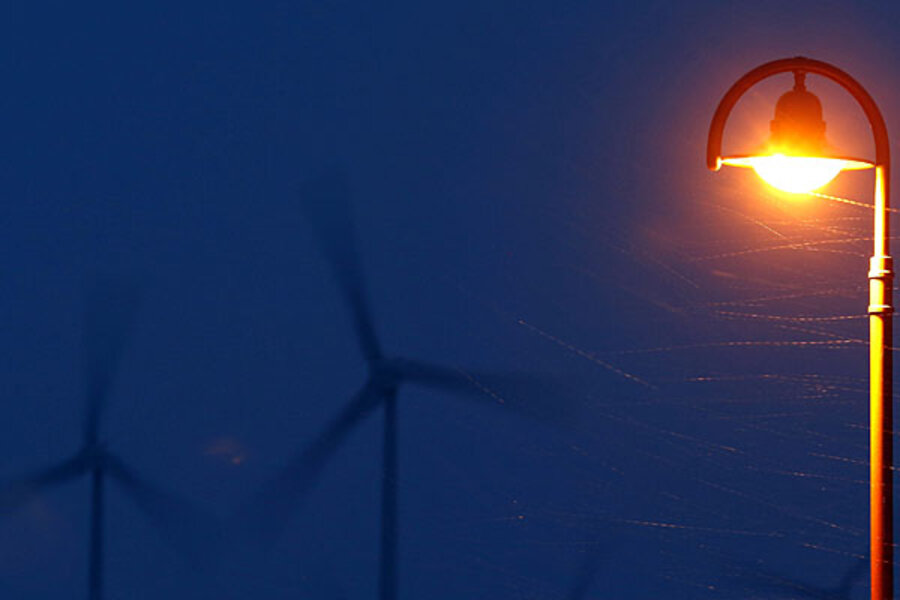Sun, wind combine to give Germany some free electricity
Loading...
It was, perhaps, a mirror image of the perfect storm: An abundance of sunshine and wind in Germany on May 11 stimulated solar and wind energy generators to the point where the price of electricity cost literally less than nothing for about an hour.
Bernard Chabot, a renewable energy consultant in France, has charted the activities of solar and wind energy generators that day. Shortly after midday, according to Chabot, the total amount of renewable energy entering Germany’s electrical grid was enough for nearly three-fourth’s of the country’s demand.
Germany, which vigorously promotes renewable energy, has enacted regulations encouraging investment in such generators, and its commercial grid is required to buy every bit of unconventional energy generated.
The amount of wind and solar energy can vary, though, and can cause a dangerous surge if there’s a glut of electricity generated by conventional and renewable sources. Still, weather forecasts can anticipate such surges 24 hours in advance, allowing time to reduce some conventional power generation.
But even that doesn’t cover every option. In an interview with Business Insider, Chabot said it may be easy to cut production at a plant powered by gas, but it’s not so simple at a coal-fired or nuclear generator. So on May 11, these facilities in Germany simply sold their electricity at extremely low prices, which for about an hour even descended into negative territory.
Germany produces much of its electrical power from renewable sources – fully 27 percent, for example, in the first quarter of 2014. Most of these generators are owned by independent contractors, including cooperatives and private citizens.
But the energy news out of Germany isn’t all good. The country’s conventional power companies remain committed to fossil fuels. And while Germany’s reliance on renewable energy is growing, conventional power generators are attracted to the inexpensive coal now being offered by the United States.
The cost of U.S. coal has dropped because of an abundance of gas obtained by the relatively new technique of hydraulic fracturing, or fracking. As a result, according to Bloomberg News, German utilities plan to open eight new coal-fired plants over the next two years.
Still, in Germany, the generation of renewable energy is steadily growing. The 27 percent share from renewables of all electricity generated in the country is more than twice that in the United States, which reported that about 13 percent of its electricity came from renewable sources by November 2013, according to Bloomberg.
Chabot says Germany is bound to maintain its progress in the use of renewables as it pursues its goal to derive 80 percent of its electricity from renewable sources by 2050.
In an e-mail exchange with ThinkProgress.org, Chabot wrote that “there are no technical and economic obstacles to go first to 20 percent of annual electricity demand penetration rate from a combination of those two technologies, then 50 percent and beyond by combining them with other renewables and energy efficiency measures and some progressive storage solutions at a modest level.”







